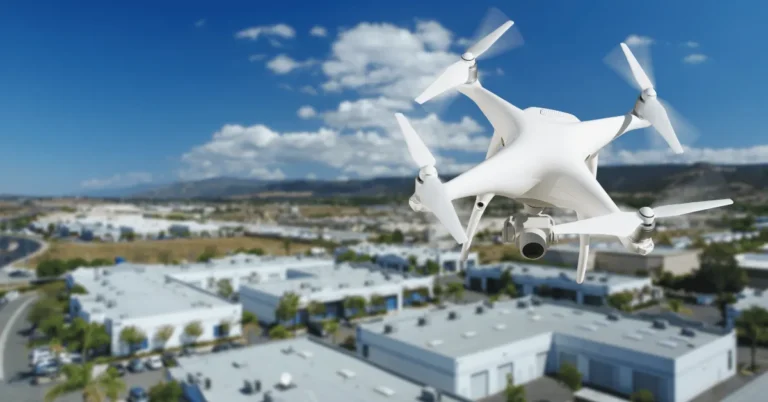What Makes Drones an Effective Weapon?

The integration of drones into modern warfare has revolutionized military operations, offering unparalleled advantages over traditional methods.
Drones, also known as unmanned aerial vehicles (UAVs), have evolved significantly since their inception. Initially, drones were primarily used for reconnaissance missions, providing crucial intelligence without risking human lives.
Over time, advancements in technology have transformed drones into multifaceted tools capable of both surveillance and armed interventions.
Historical Development of Drones
Early Development
The development of drones traces back to the early 20th century, but significant progress was made during the late 20th and early 21st centuries. Early drones were relatively simple, often used for target practice or basic reconnaissance.
Technological Advancements
The advent of advanced electronics, GPS, and miniaturization of components has led to the creation of sophisticated drones that can perform a wide range of military functions.
Today’s military forces utilize various types of drones, including small, lightweight reconnaissance drones, medium-sized tactical drones, and large, armed drones capable of carrying missiles and other munitions.
Curious about how GPS sensors guide drones? Dive deeper into their uses here: What are GPS Sensors Used for, Especially in Drones?
Advantages of Drones in Modern Warfare
Enhanced Operational Capabilities
One of the primary reasons drones have become a preferred tool in modern warfare is their ability to operate in environments that are too dangerous or inaccessible for manned aircraft.
Drones can fly at high altitudes, undetected by enemy radar, and provide real-time data to commanders on the ground. This capability allows for more precise and informed decision-making.
Additionally, drones can loiter over targets for extended periods, providing continuous surveillance without the fatigue limitations of human pilots.
Cost-Effectiveness
Another advantage of drones is their cost-effectiveness. Operating drones is generally less expensive than deploying manned aircraft, both in terms of initial investment and operational costs.
Furthermore, the risk to human life is significantly reduced, as drones are remotely piloted. This has led to drones being increasingly utilized in a variety of military operations, from targeted strikes to intelligence gathering and border security.
Before you take to the skies, be sure you’re familiar with the rules! See our guide on Drone Laws in New Jersey: Do I Need a Permit to Fly My Drone?
Technological Advancements and Capabilities
Extended Flight Range and Endurance
The rapid evolution of drone technology has significantly enhanced their effectiveness in combat scenarios. One of the most notable advancements is the improvement in flight range and endurance.
Modern drones are now capable of longer flight durations, covering greater distances without the need for frequent refueling or recharging. This extended range allows for prolonged surveillance missions and the ability to strike targets in remote or hard-to-reach locations.
Increased Payload Capacity
Another critical improvement is in payload capacity. Drones can now carry a variety of payloads, from precision-guided munitions to sophisticated surveillance equipment.
This versatility enables them to perform multiple roles on the battlefield, from reconnaissance to direct engagement.
The integration of precision targeting systems means that drones can strike with unprecedented accuracy, minimizing collateral damage and increasing mission success rates.
Integration of AI and Machine Learning
Artificial intelligence (AI) and machine learning (ML) have also revolutionized drone capabilities. These technologies facilitate autonomous navigation, allowing drones to operate with minimal human intervention.
AI algorithms enable drones to process vast amounts of data in real-time, enhancing their ability to recognize and track targets. Machine learning models continually improve these capabilities by learning from past missions and adapting to new challenges.
Advanced Sensors and Communication Systems
The integration of advanced sensors and communication systems has significantly improved situational awareness.
Modern drones are equipped with high-resolution cameras, infrared sensors, and radar systems that provide comprehensive battlefield intelligence.
These sensors collect real-time data, which is transmitted back to command centers via secure communication links.
This real-time data transmission ensures that decision-makers have up-to-date information, enhancing the overall effectiveness of military operations.
Wondering about completely silent drones? Check out our guide to the quietest drones on the market!
Strategic Advantages of Using Drones
Enhanced Surveillance and Reconnaissance
Drones have transformed modern military operations by offering a range of strategic advantages, making them an essential asset on the battlefield.
One of the most significant benefits is their capability to conduct surveillance and reconnaissance missions without endangering human lives.
Equipped with advanced sensors and cameras, drones can gather critical intelligence in hostile environments, providing real-time data to military commanders.
This ability to monitor areas from a safe distance enhances decision-making and operational planning, reducing the risk to personnel.
Cost-Effectiveness and Resource Optimization
Cost-effectiveness is another key advantage of using drones in military applications. Compared to manned aircraft, drones are less expensive to manufacture, operate, and maintain.
They require fewer resources and personnel to deploy, making them an economical choice for sustained operations.
Furthermore, drones can be used in scenarios where deploying manned aircraft would be impractical or too costly, thus optimizing resource allocation within military budgets.
Rapid Response Capability
The rapid response capability of drones affords military forces unparalleled flexibility in various combat scenarios.
Drones can be quickly deployed to address emerging threats, such as counterterrorism operations, border security, and battlefield support.
Their ability to provide immediate situational awareness and deliver precision strikes allows for swift and effective action against adversaries. This agility ensures that military forces can adapt to dynamic situations and maintain a tactical advantage.
Successful Drone Operations
Examples of successful drone operations highlight these strategic advantages. In counterterrorism missions, drones have been instrumental in locating and neutralizing high-value targets with minimal collateral damage.
During border security operations, drones have enhanced surveillance capabilities, enabling the detection and interception of illegal activities.
On the battlefield, drones have provided critical support by identifying enemy positions and coordinating artillery strikes, significantly improving the effectiveness of military engagements.
Curious about whether a landing pad helps a drone land? Learn more about the benefits of landing pads in our guide on [landing pads].
Ethical and Legal Considerations
Civilian Casualties and Targeted Killings
The deployment of drones as weapons has sparked extensive ethical and legal debates, focusing on the potential for civilian casualties and the misuse in targeted killings.
Drones, while advanced in their precision, have not completely eradicated the risk to non-combatants.
Incidents of collateral damage often raise moral questions about the justification of such strikes, especially in densely populated areas where the likelihood of civilian presence is high.
The ethical dilemma revolves around whether the benefits of drone strikes in eliminating high-value targets outweigh the potential harm to innocent lives.
International Laws and Regulations
Legally, the use of armed drones is governed by international laws and regulations, including the laws of armed conflict and human rights law.
Different countries have adopted varied stances on these regulations. For instance, the United States has a robust drone program with specific protocols and oversight mechanisms, while other nations may have less stringent measures.
The international community has called for clearer frameworks to ensure that drone strikes comply with legal standards, particularly in terms of proportionality and distinction between combatants and civilians.
Transparency and Accountability
Transparency and accountability are central to the debate on drone warfare. Critics argue that the often-secretive nature of drone operations undermines public trust and accountability.
There is a pressing need for governments to disclose the criteria and processes behind targeting decisions, as well as to investigate and report any incidents of civilian harm.
Such transparency is crucial for maintaining public confidence and ensuring that drone warfare adheres to ethical standards.
Addressing Ethical Concerns
Efforts are underway to address these concerns, including calls for stricter international regulations and the development of ethical guidelines specifically for drone use.
Balancing military effectiveness with moral and legal responsibilities remains a critical challenge. Ensuring that armed drones are used in a manner that respects human rights and minimizes civilian harm is essential for upholding the integrity of international law and the ethical conduct of warfare.
Drones vs. missiles: can air defense systems effectively target them? Read on to find out!
Conclusion
The integration of drones into modern warfare has transformed military operations, offering significant advantages in terms of operational capabilities, cost-effectiveness, and strategic flexibility.
However, the use of drones also raises important ethical and legal questions that must be addressed to ensure their responsible deployment.
As technology continues to advance, the role of drones in military operations will likely expand, necessitating ongoing discussions about their impact and regulation.







